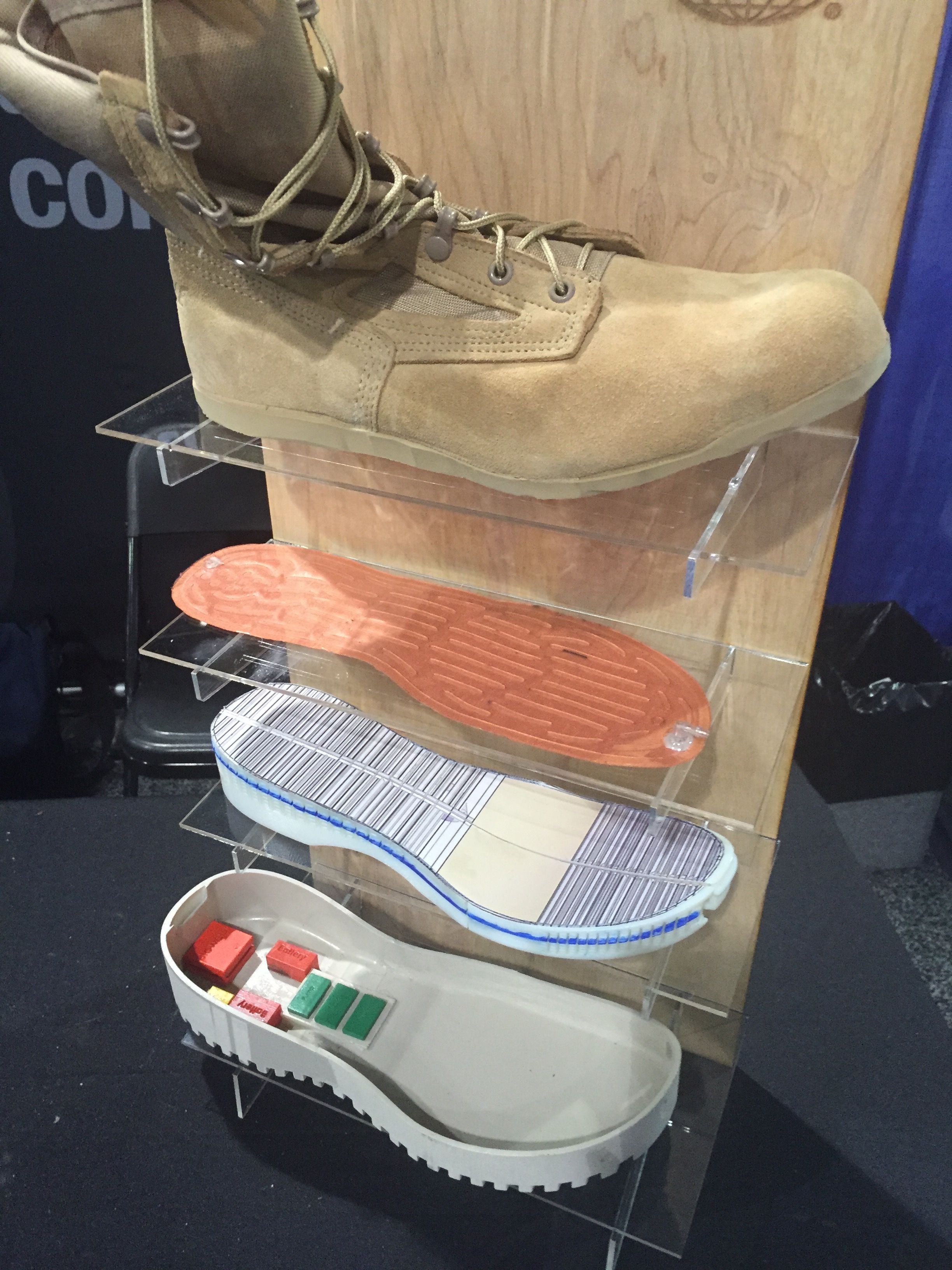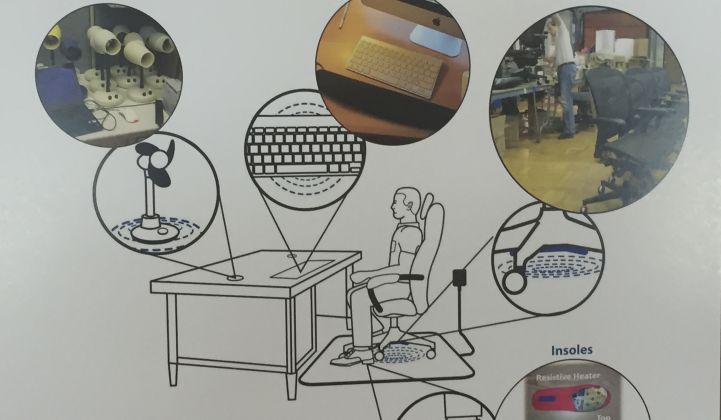Water-cooled boots, temperature-adjustable office chairs, and even robots that blow hot and cold air in your face might not seem like big energy-saving technologies. But if the experiments underway at ARPA-E have anything to do with it, they'll get a chance to test themselves in the market someday soon.
This proposition was on display at this week's ARPA-E Innovation Summit, alongside the batteries, biofuels, solar panels and other next-generation technologies normally associated with the Energy Department’s blue-sky research agency.
Funded under the ARPA-E Delivering Efficient Local Thermal Amenities, or DELTA, program, they all have a common purpose -- to heat and cool the person, not the building.
“People are not everywhere -- they’re only in certain places. Buildings are way overdesigned and over-conditioned for the number of people" they typically house, said Edward Arens, director of UC-Berkeley’s Center for the Built Environment (CBE), speaking at the conference on Tuesday.
Arens and his colleagues were showing off their latest work for ARPA-E, which included wireless charging for temperature-controlled chairs, shoes and other personal items.
Some people just naturally feel warmer or cooler than others do. That makes it hard to find the right balance of indoor air temperature to please everyone in a building.
Concentrating on heating and cooling the individual allows for a lot more leeway in the ambient air temperature controlled by central HVAC systems and thermostats, said Arens. Adding simple things like desk fans and foot warmers can keep people feeling comfortable at temperatures from the mid-60s to the low-80s degrees Fahrenheit.
And as you expand that range of lower and upper temperature bounds that the building allows before its HVAC system kicks in, you can save a ton of energy, he said. “For every degree Fahrenheit, you can expand the deadband in either direction, and you can save 5 percent to 7 percent of your HVAC energy spend. I think these numbers are real -- and they’re astonishingly big.”
The challenges that hinder the widespread adoption of these individualized technologies in office environments are cost and complexity. For example, CBE’s temperature controllable chair, now being produced by startup Personal Comfort Systems, is pretty expensive right now. They come in at $1,900 a piece, according to CBE research specialist Hui Zhang.
And while these devices use far less power than do traditional space heating and cooling systems -- about 14 watts to heat the chair and about 3.5. watts to run the fans -- they do require daily recharging of their lithium-ferrophosphate batteries, which could be an inconvenience for people on their way out of the office at the end of the day. That’s why CBE’s ARPA-E work brings wireless charging into the picture, through a partnership with startup WiTricity.
ARPA-E’s showroom floor featured multiple concepts for personal thermal management. There were several examples of textiles that adjust to meet the wearer’s comfort needs, for example. To get a sense of how high-tech this can be, here’s a description from a University of Maryland research team: “Nanostructures with ideal thermal band and inter-coupling regulated by thermo-responsive polymers in a textile-compatible process to effectively regulate body temperature by synergetic infrared radiation and air convection.”
There was even a concept version of a “RoCo,” or “Robotic Personal Cooling Device,” which is essentially an air conditioner that follows a person around, blowing cold air at them. The University of Maryland team has a goal of getting the cost of this robot down to $60, which seems a stretch given that a Roomba vacuum-cleaning robot retails for $330 and up.
Perhaps putting the cooling in the soles of shoes is a simpler way to go about things. Palo Alto, Calif.-based research institute SRI International is taking a crack at this concept with its ReBOOT -- a steel-toe work boot that uses room-temperature water insoles, cooled by tiny fans, to keep people feeling cool.
“We are developing a solution that can actively cool the body through heat transfer, through the palms of your hands or the soles of your feet,” Philip von Guggenberg, SRI business development director, explained.
In the ReBOOT, the cooling is provided by a water-veined insole, which creates a cooling sensation even when kept at room temperature, he said. “The heat is being transferred to the environment through a fan,” von Guggenberg explained. That’s a relatively low-power application, making it possible for a small battery in the boot to keep the system running for an eight-hour workday, he said. Then “you plug your boots in at night.”

Adding some simple wireless connectivity to the boots could allow wearers to manage their preferred comfort level through a smartphone app, he added. Eventually, SRI would like to explore the potential for water-cooled athletic shoes, although those have a lot less free space in the heel and sole to insert fans and batteries.
Berkeley’s CBE is also looking to network its temperature adjustable chairs and other office gear, Arens said. That’s not just a benefit in terms of helping the person who’s using them to find their preferred comfort settings, he added -- “If it can communicate to the central building management system, there is now a thermostat in every workspace.”



